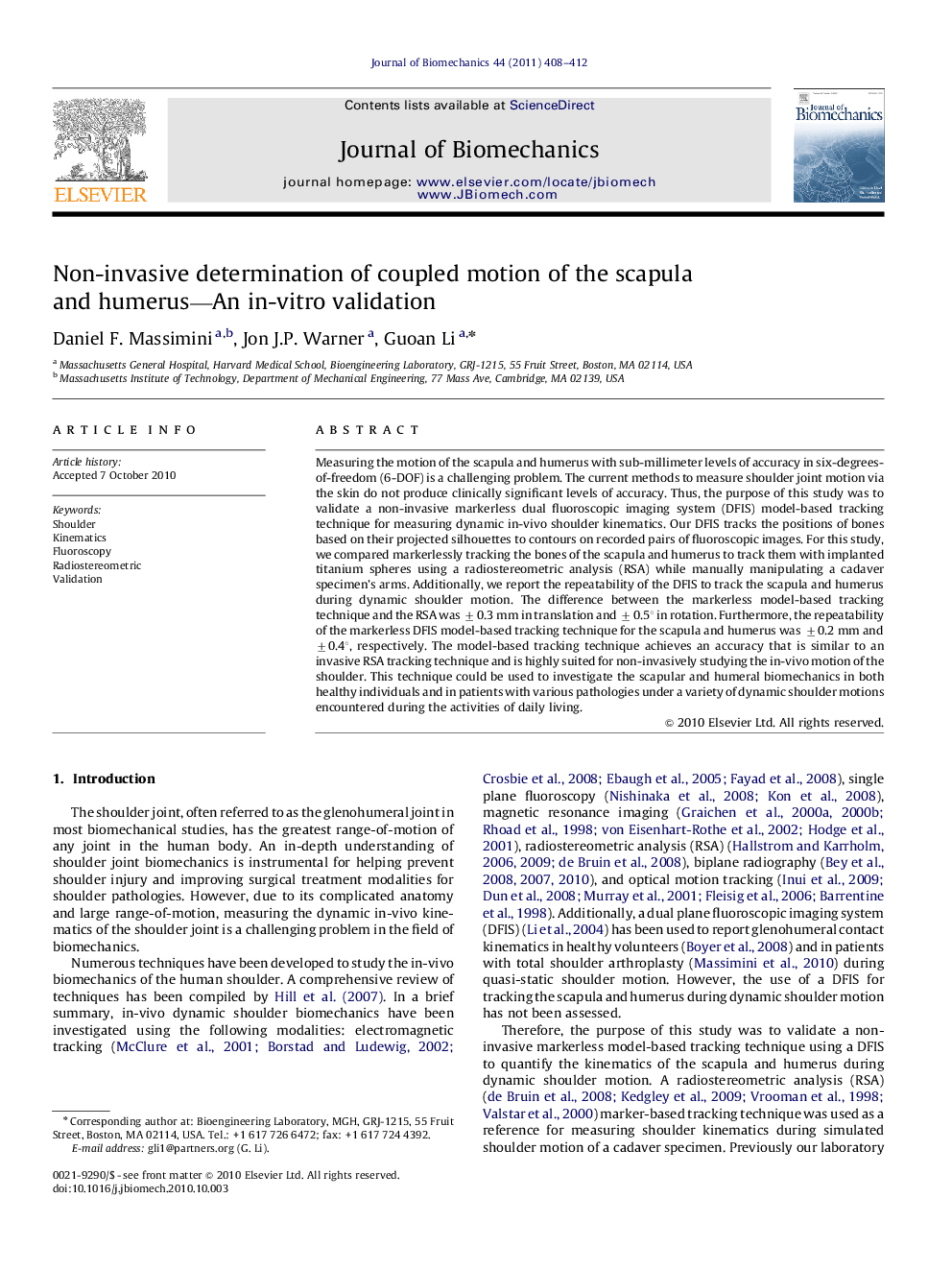| Article ID | Journal | Published Year | Pages | File Type |
|---|---|---|---|---|
| 873045 | Journal of Biomechanics | 2011 | 5 Pages |
Measuring the motion of the scapula and humerus with sub-millimeter levels of accuracy in six-degrees-of-freedom (6-DOF) is a challenging problem. The current methods to measure shoulder joint motion via the skin do not produce clinically significant levels of accuracy. Thus, the purpose of this study was to validate a non-invasive markerless dual fluoroscopic imaging system (DFIS) model-based tracking technique for measuring dynamic in-vivo shoulder kinematics. Our DFIS tracks the positions of bones based on their projected silhouettes to contours on recorded pairs of fluoroscopic images. For this study, we compared markerlessly tracking the bones of the scapula and humerus to track them with implanted titanium spheres using a radiostereometric analysis (RSA) while manually manipulating a cadaver specimen’s arms. Additionally, we report the repeatability of the DFIS to track the scapula and humerus during dynamic shoulder motion. The difference between the markerless model-based tracking technique and the RSA was ±0.3 mm in translation and ±0.5° in rotation. Furthermore, the repeatability of the markerless DFIS model-based tracking technique for the scapula and humerus was ±0.2 mm and ±0.4°, respectively. The model-based tracking technique achieves an accuracy that is similar to an invasive RSA tracking technique and is highly suited for non-invasively studying the in-vivo motion of the shoulder. This technique could be used to investigate the scapular and humeral biomechanics in both healthy individuals and in patients with various pathologies under a variety of dynamic shoulder motions encountered during the activities of daily living.
